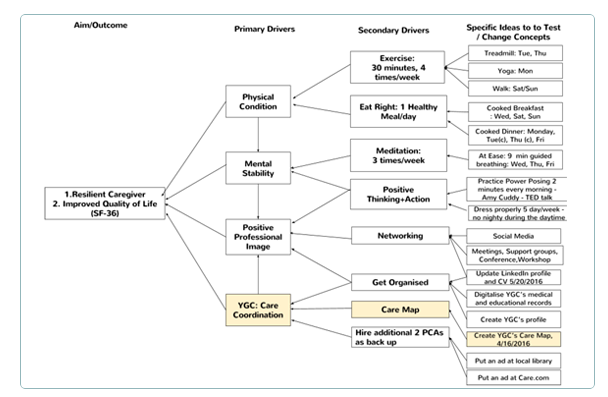Mastering the Planning Stage of PDSAs

Plan-Do-Study-Act (PDSA) cycles are a tool to support improvers to test, measure and refine proposed changes quickly and effectively, making them a critical tool for quality improvement (QI) work. If you’ve completed PDSA cycles but are having difficulty identifying changes that lead to improvement, it’s time to take a step back and review your PDSA process, starting with the “P.” The planning stage sets the foundation of your PDSA cycle, which means mastering it is essential.
Before we jump in, let’s quickly review the key elements of the planning stage:
- Set your objective
- Create a plan to carry out the test (who, what, where, when)
- Ask questions and make predictions
- Develop a plan for data collection
To ensure your PDSA cycles have a sturdy foundation, consider these tips.
When setting your objective, remember:

To connect your specific objective with both primary and secondary drivers, which are the underlying theories that will drive change efforts to reach an overall aim. Your primary drivers directly impact your aim, while your secondary drivers influence your primary drivers. Clearly mapping out these connections will help you link each test to a theory of change so that you better understand why certain changes lead to certain outcomes. Ultimately, this theory can help you confidently build out your tests and refine your proposed change over consecutive cycles.
Confused about the difference between aim and objective? Click here to avoid this common PDSA planning pitfall.
Every PDSA implementation plan should assume:
That the participants carrying out the PDSA cycle may not have been involved with the planning phase. Making the most of a PDSA cycle means ensuring teams can confidently move through all four stages of the cycle and then move from one cycle to the next. Providing detailed instructions in the planning stage will help your teams successfully execute the test and later analyze it for lessons-learned that can be applied to the next cycle. Ensure clear directions by assigning actions to specific participants and mapping out dates and deadlines. As your team moves through the “Do” phase, they can use this document as the foundation for a running log of the work being done, which will help them succeed once they reach the “Study” phase.
When making your predictions, remember:
- To answer the following question: What will be better or improved in this cycle because of the plan you developed? The prediction is the most important part of the planning stage because it clarifies what you will improve in this cycle. Or, to put another way, it helps you understand what you will do differently to accomplish your outcome. By answering this question in your prediction, you’ll more easily find changes that result in improvement.
- To include numeric predictions, which help teams understand the magnitude of the outcome and better consider what needs to change to accomplish it. For example, a prediction that 50 percent of children in one Kindergarten class will receive a vision screening will be more beneficial than one that does not specify the predicted percentage of children screened. A numerical prediction helps teams better predict the magnitude of the change needed, and consider the number of people and resources needed to support it. Similarly, measurable predictions help teams consider how best to measure the improvement and gives them a foundation for comparing the results between different PDSA cycles.
Don’t develop a plan for data collection without:
Making room for qualitative and quantitative feedback. As noted, numeric measures are important to determine success, but qualitative feedback can reveal possible disconnects between the plan and the implementation. Provide surveys or questions to participants that prompt them to share feedback and identify barriers they encountered. Document any unanticipated problems and make note of assumptions that were made. By adjusting your next PDSA cycle based on these responses, participants will move into the “Do” stage with ease. And, the qualitative feedback is an important element to the “act” phase as you determine what you will do differently during the next plan.
Giving participants the opportunity to voice their concerns can also spark increased enthusiasm during future PDSA cycles. When participants feel their opinions matter, they are more likely to buy into the process.
